
by Pim Bellinga
Co-Founder of Grasple
Sourcing or creating teaching materials of good quality takes time - time that individual educators often cannot spare. Turning to traditional publishers, which provide copyrighted materials guaranteed to be of a certain standard, can save instructors time, but does mean giving up control.
An alternative time-saving solution is to collaborate with peers in communities of practice, where knowledge and resources are shared. There clearly isn’t one right way to collaborate. However, we do see a pattern emerging of communities of practice starting small and growing gradually in working closely together to develop high-quality educational resources.
We’ve identified seven different patterns of collaboration, and we’re confident that our list is not exhaustive. This blog shows seven different empirical visualisations in which co-creation has worked beneficially in developing OER in higher education.
Seven patterns of collaboration
Grasple has been supporting communities of practice for over six years, and in this time we’ve seen collaboration take many different shapes. We’ve identified seven distinct patterns of collaboration, which we’ve captured in the schematics below. We’re excited to share these here, because we hope they will help communities of practice find or fine-tune their preferred pattern of collaboration, and add to the language with which they share their best practices.
The seven patterns of collaboration we’ve identified share common elements, which are represented in the visualizations by the following symbols:
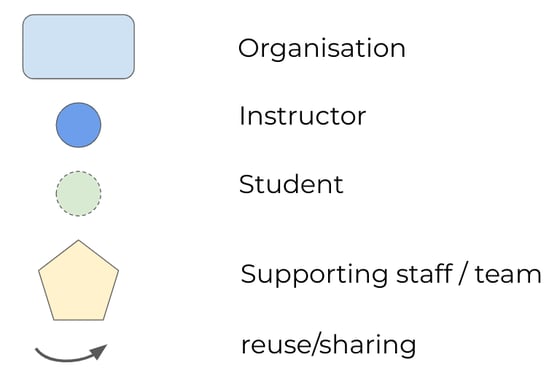
1. A great start: Internal communities of practice
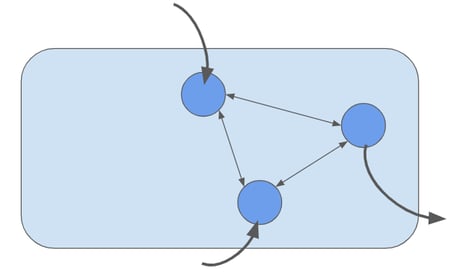
A natural starting point for a Community of Practice is the organisation. We often see teams of educators co-creating materials for shared courses.
At Utrecht University, teachers from the Methods department started collaborating due to a big curriculum change in 2018
2. A first step outside the organisation: Informal sharing
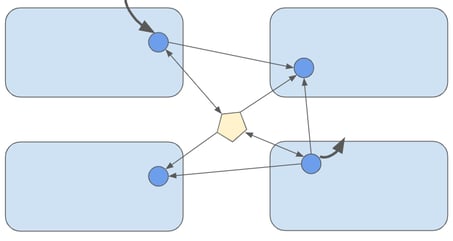
At Grasple, we often help to bring educators from similar fields, but different organisations, together for occasional and informal collaborations.
3. Formalising the internal community of practice: In-house OER publishers
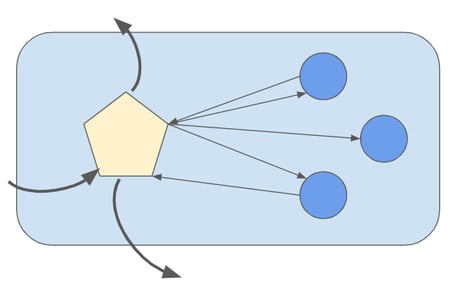
An internal Community of Practice can become a formal part of an organisation. At Delft University of Technology, the internal team PRIME functions as an in-house Open Educational Resources (OER) ‘publisher’ - creating and curating materials for Mathematics education.
4. Branching Out: Sharing resources between communities of practice
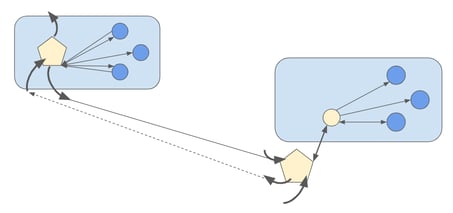 Established communities of practice find each other to expand their pool of knowledge and resources. At Grasple, we are supporting the University of Twente with their switch from commercial publishers to OER. We are able to do this in part thanks to the excellent materials created by PRIME, the in-house OER ‘publisher’ of Delft University of Technology.
Established communities of practice find each other to expand their pool of knowledge and resources. At Grasple, we are supporting the University of Twente with their switch from commercial publishers to OER. We are able to do this in part thanks to the excellent materials created by PRIME, the in-house OER ‘publisher’ of Delft University of Technology.
5. Formalising inter-organisation communities of practice
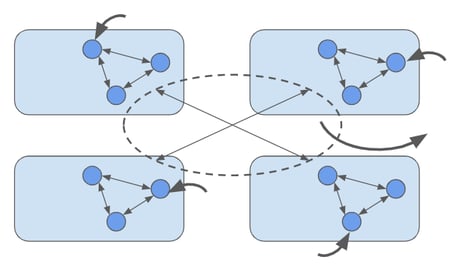
Multiple organisations with their own internal communities of practice can come together to collaborate in a formal community of practice. A beautiful example is SHARESTATS, an initiative of four Dutch universities to create openly accessible Statistics content.
6 & 7. Involving students in the collaboration: Student-driven curation or creation
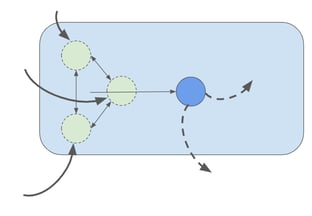
Students can help to find and filter Open Education Resources (OER) into a curated selection to ensure the quality of the materials.
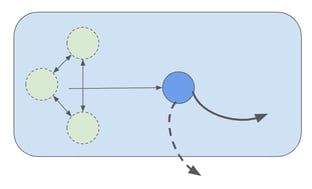 Or students can create exercises, peer-review them and then share. Math teachers of the future are experimenting with these two patterns in their education at Amsterdam University of Applied Sciences.
Or students can create exercises, peer-review them and then share. Math teachers of the future are experimenting with these two patterns in their education at Amsterdam University of Applied Sciences.
Take-away: to grow the sharing of OER: think big, start small
We noticed that instructors don’t suddenly start reusing and sharing resources via online platforms. A first step is to collaborate with one or two colleagues, either in or outside their organisation.
This hinges on trust; people contribute their scarce time and solid efforts more confidently when they trust that others within a community of practice will also pull their weight and respect everyone’s work. Keeping communities of practice small and local initially can help to foster trust. Once communities of practice are well established, they expand their reach by formalising and/or collaborating with other individuals or communities.




